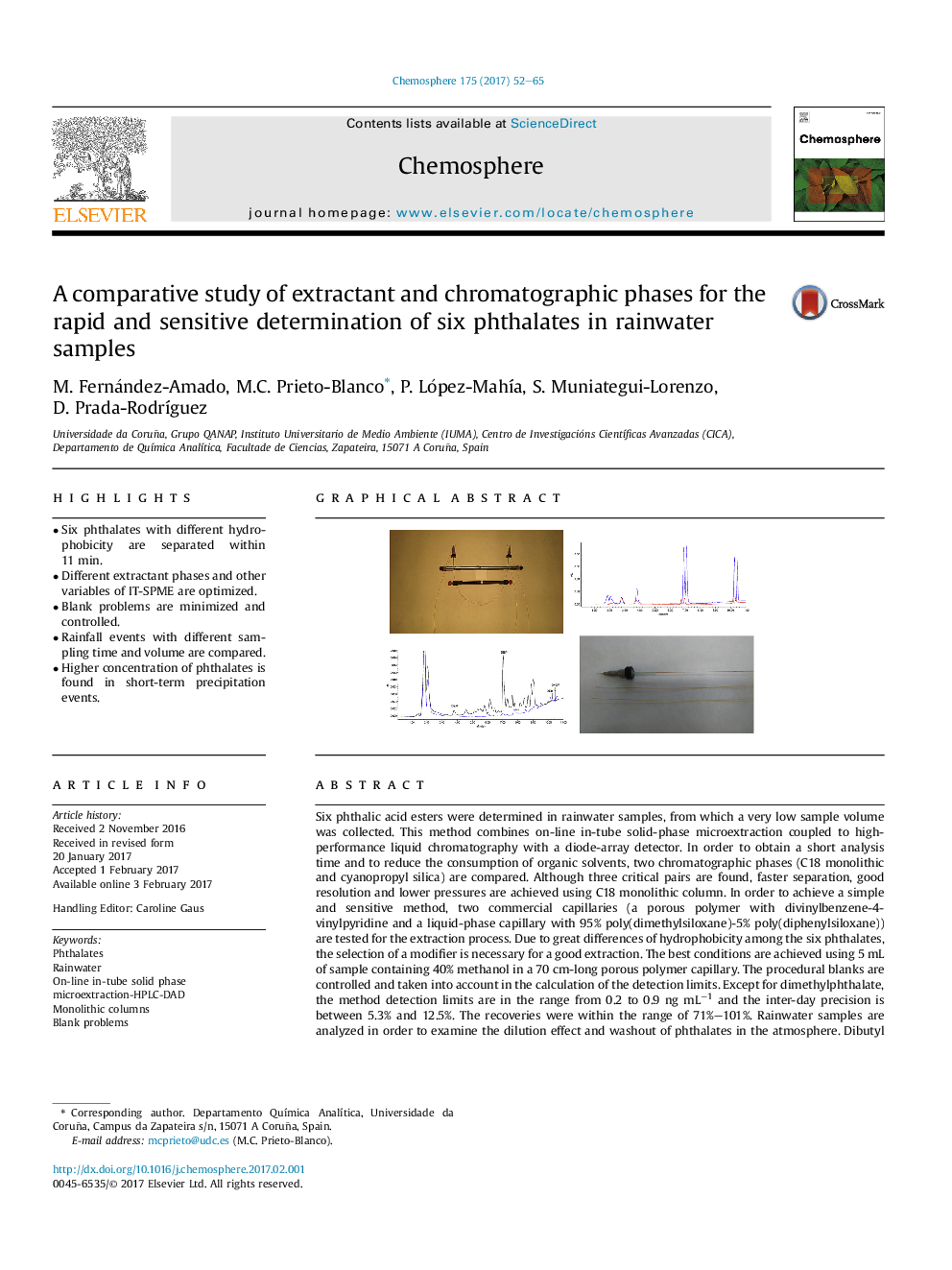| کد مقاله | کد نشریه | سال انتشار | مقاله انگلیسی | نسخه تمام متن |
|---|---|---|---|---|
| 5746468 | 1618796 | 2017 | 14 صفحه PDF | دانلود رایگان |
- Six phthalates with different hydrophobicity are separated within 11Â min.
- Different extractant phases and other variables of IT-SPME are optimized.
- Blank problems are minimized and controlled.
- Rainfall events with different sampling time and volume are compared.
- Higher concentration of phthalates is found in short-term precipitation events.
Six phthalic acid esters were determined in rainwater samples, from which a very low sample volume was collected. This method combines on-line in-tube solid-phase microextraction coupled to high-performance liquid chromatography with a diode-array detector. In order to obtain a short analysis time and to reduce the consumption of organic solvents, two chromatographic phases (C18 monolithic and cyanopropyl silica) are compared. Although three critical pairs are found, faster separation, good resolution and lower pressures are achieved using C18 monolithic column. In order to achieve a simple and sensitive method, two commercial capillaries (a porous polymer with divinylbenzene-4-vinylpyridine and a liquid-phase capillary with 95% poly(dimethylsiloxane)-5% poly(diphenylsiloxane)) are tested for the extraction process. Due to great differences of hydrophobicity among the six phthalates, the selection of a modifier is necessary for a good extraction. The best conditions are achieved using 5 mL of sample containing 40% methanol in a 70 cm-long porous polymer capillary. The procedural blanks are controlled and taken into account in the calculation of the detection limits. Except for dimethylphthalate, the method detection limits are in the range from 0.2 to 0.9 ng mLâ1 and the inter-day precision is between 5.3% and 12.5%. The recoveries were within the range of 71%-101%. Rainwater samples are analyzed in order to examine the dilution effect and washout of phthalates in the atmosphere. Dibutyl phthalate is the predominant phthalate found and di-(2-ethylhexyl) phthalate is detected in all analyzed samples.
195
Journal: Chemosphere - Volume 175, May 2017, Pages 52-65
